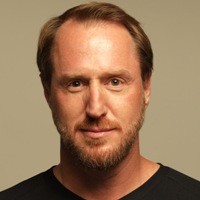Advice to my 30-year-old self.
After a visit from death saved my life, I’ve been looking in the mirror and writing a series of articles focused on giving advice to myself as a 30-year-old, knowing what I know now. This is my last article in this series, which I began writing in June, 2018.
The first five articles included:
- 2 Words of Advice that can help us at Every Stage of Life, which focused on this advice: “know thyself;”
- How to Practice Living in Truth;
- How to (really) Listen to our Hearts: an Exercise;
- What the F*ck Should we Do with our Lives?; and
- “Do what you Love” is Meaningless if you haven’t done This.
The last article, “Do what you Love,” focused on using what we’ve learned in the series to create a kickass career path by focusing on our joys.
The same process we used for our career path can also be applied to our love life, friendships, family, and spiritual well-being. By doing so, we can now start creating a complete vision for the rest of our lives.
I have used the process of writing a dream biography over the years to craft the vision for my life. A dream biography is different from a biography in that we have not yet fully lived our life. It is a “dream” because we must imagine the life we would like to live before we actually live it.
All we need to start writing a dream biography is a willingness to imagine our future unencumbered, possess a desire to create the life we have not yet lived, and have the tenacity to write the most ideal version of our life as if it has already occurred.
Through the previous exercises, we identified our deepest needs, values, and interests; we will build our dream biography using these, while remembering everything that felt expansive on our lists.
Begin by imagining that you are 100 years old and looking back on your life.
What happened between this moment and the age of 100? Write as much or as little as you wish. This assignment intentionally has no further instructions.
Writing and stating our intentions for our lives makes it easier for us to set clear goals, particularly when our goals are aligned with what we’ve envisioned for our life. Once we have written the dream biography, we will set new short and long-term goals aligned with realizing our dream life.
Identify one thing in relation to each category—for example, career, family, and love—that we can start doing over the long-term to begin moving toward the life we’ve imagined.
We need to identify the major things that are going to have to change to achieve what we’ve envisioned. For example, if we envision being a therapist in the future, it will likely require a graduate degree. Write that down.
Now, we want to identify one thing that we can do right now to achieve the long-term goal.
For example, commit to researching one graduate degree program per week, or sign up to take any prerequisites needed to get accepted into a program. We can validate our new goals by cross-referencing the extent to which they are aligned with the expansive, or joyous experiences of our past, as well as our future, vis-a-vis our dream biography. Write as many short and long-term goals as possible.
In the West, our incessant focus on outcomes and goal achievement often leads us to negate the journey for the destination. This entire series was designed to flip the script and force us to embrace the processes and practices that can lead us to more positive outcomes.
If we judge these processes, or expect a time delimited outcome, then we’re missing the “power of practice,” which author Julianna Ricci does an excellent job of covering. Her book, The Power of Practice: Spiritual Laws for an Extraordinary You, is chock-full of insights that can anchor us in practice when we’re facing the ambiguity inherent to the future, or any unknown outcome.
As we get better at engaging in practice, while letting go of any expectations of being what others believe we ought to be, our path in life will continuously reveal itself in truth. Possibilities for new, vibrant, and healthy relationships will open up as we begin to let go of negative, contracted, and unhealthy relationships, careers we hate, and any conditioned spiritual practices that do not make us feel lovingly expansive.
Along the way, remember to always invest in yourself, pursue happiness, exercise, love, play, develop a spiritual practice, embrace an ecological worldview, and further your education in any manner that nurtures inner truth.
~
Author’s note: Thank you for reading my series: Advice to My 30-Year-Old Self. This is my last article as a Featured Author for Elephant Journal. I’m grateful to have been able to share my writing with the community since 2012. If you’d like to keep up with my writing going forward, check out the links below my author profile, or simply subscribe to my newsletter.
Special thanks to Waylon Lewis who has created a space for us to write about the mindful life and all those who have edited my writing along the way: Callie Rushton, Travis May, Catherine Monkman, Yoli Ramazzina, Ashleigh Hitchcock, Nicole Cameron, and others.
~









Read 0 comments and reply